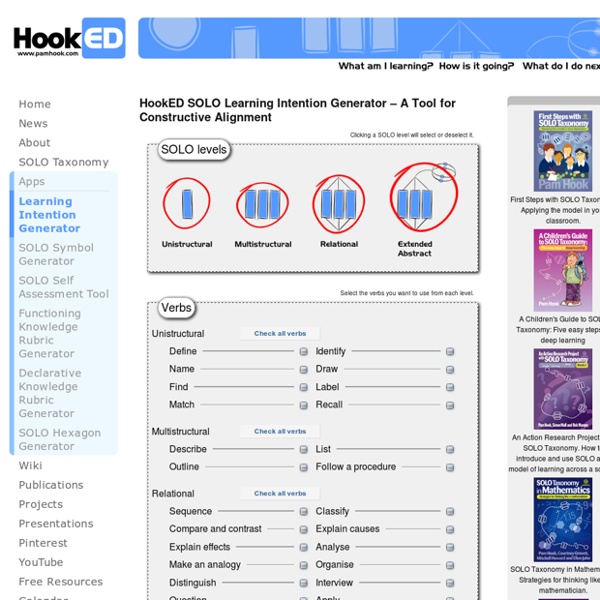



The Art of Planning Deeper Learning | Totally Learned As A Deep Learning Experience Deep Learning experiences develop when the learner is able to identify and link pre-existing knowledge and understandings. As the learning becomes deeper the learner is then able to extend and apply their ideas. As teachers this is what our classroom should be all about – to use activities and questions to construct opportunities to achieve more complex and deeper understandings Recently I had the pleasure of listening to John Hattie speak at a launch of the ‘New Pedagogies for Deep Learning’ project. In reflection I couldn’t help but draw comparisons with my own Deep Learning that was occurring. SOLO TaxonomySOLO stands for ‘Structure of the Observed Learning Outcomes’. Some levels of SOLO can be described as Surface Learning and others as Deeper Learning. In addition to assessing understanding it can useful for designing strategies and questions for the classroom. Some things to check out about SOLO Taxonomy. With the inclusion of collaboration: Like this:
SOLO based approaches and effective strategies From HookED Wiki When schools create a “thinking toolbox” of skills and dispositions, they risk teaching for the knowing of thinking, rather than the understanding of thinking. (For an example of a thinking toolbox click on thumbnail below - adapted from Hook, P. (2006). A Thinking Curriculum. The meta language for learning from The Structure of Observed Learning Outcome (SOLO) model (Biggs and Collis, 1998) allows schools to teach for this understanding of thinking. Using SOLO levels to differentiate learning outcomes can be applied to any approach and or strategy used for thinking - enabling both teachers and students to better target support for specific learning outcomes.
The Arts From HookED Wiki The Arts Dance Adele Griffin (Blockhouse Bay Intermediate School) developed this self-assessment rubric to use her planning for her Dance students. PlanningFile:BBI DANCE 2010.pdfSelf Assessment RubricFile:BBI Dance SOLORubric.pdf Music Tamsyn Chan (Blockhouse Bay Intermediate) developed these SOLO Rubrics and exemplars for Melody Writing. File:BBI Music MelodyWriting SOLORubric.pdf File:BBI Melody Writing WS Template.pdf Melody Writing Extended Abstract Exemplar: Drama Using SOLO Taxonomy to create a common language of learning rubric for self assessing dramatic performance in junior school File:HOT Drama Y2 Feelings Rubric.pdf. Visual Art Visual arts - Collage and group installationFile:HOT Visual Arts SOLO Self Assessment Rubric Collage.pdf Matt Brunton from Blockhouse Bay Intermediate School developed these SOLO Coded rubrics for Year 8 Students creating art using line, colour and shape. File:BBI CreatingArt SOLORubric Y8.pdf Copyright © Hooked on Thinking.
Inquiry Learning From HookED Wiki HOT Inquiry Self Assessment Rubrics Toc(For Professional Discussion within schools working with Hooked on Thinking on Inquiry Learning) HOT Rubrics for Stages in Research Process: File:HOT RESEARCH INQUIRY RUBRIC BLANK.pdf HOT Rubrics for Stages in Inquiry Process. SOLO Taxonomy self assessment rubrics can be built for ANY stages in a school's inquiry model.The following rubrics allow primary aged students to self-assess their learning outcomes when: asking questions, accessing information, sorting information, reporting and presenting, and when self evaluating. File:HOT WAIKInquiryRubric PH.pdf Asking Questions Accessing Information Sorting Information Reporting and Presenting Information Self Evaluation Example Inquiry Rubrics Vauxhall School Devonport File:HOT VAUXHALL SELF ASSESSMENT for INQUIRY RUBRIC.pdf Achievement Standard Biology 1.2 Report on a Biological issue File:HOT Biology 1.2 Report on a biological issue Rubric.pdf Copyright © Hooked on Thinking.